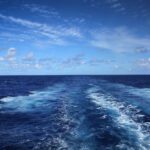From locations of spawning sites to species distribution models, the data and code used by fisheries and aquatic scientists are vast. But access to the data and code can be limited, including those which underlie research published in scientific journals.
The Canadian Journal of Fisheries and Aquatic Sciences (CJFAS) and its publisher, Canadian Science Publishing (CSP), are excited to share a new Data and Code Availability Policy in support of open science.
Effective May 6, 2024, for studies presenting original results, it is a condition for publication of accepted manuscripts at CJFAS that authors make publicly available all data and code needed to reproduce those results (including code to reproduce statistical results, simulation results, and figures) via an online data repository.
Why does CJFAS require open data and code for publication?
“We are in an age where code and data are an integral part of science,” says Dr. Sean Anderson, Associate Editor with CJFAS and research scientist at the Pacific Biological Station with Fisheries and Oceans Canada. For journals, policies requiring open data and code “demonstrate a commitment to transparency, verifiability, and reproducibility that can accelerate the rate at which science can progress.”
Progressing data and code sharing policies is one of the ways in which CSP is fulfilling its commitment to open science. Another action this year was, CSP partnering with the Society for Open, Reliable, and Transparent Ecology and Evolutionary Biology (SORTEE).
“I’m delighted to see CJFAS taking a leadership role in promoting open science with its new data policy. These policies are critical for the future of our field,” says Dr. Alexa Fredston, Treasurer and member of the Board of Directors of SORTEE and Assistant Professor in the Department of Ocean Sciences at the University of California, Santa Cruz. “As ecology and evolution research has become increasingly complex, the challenge of understanding and replicating scientific results has grown. Meeting that challenge requires a vision for open, reliable, and transparent data and code sharing—exactly what CJFAS asks authors to do going forward. This policy also raises the bar for the data management skills that are expected of researchers.”
Given Canada’s commitment to open data and research data management, we are proud to introduce this policy at a flagship journal for fisheries and aquatic sciences in Canada.
“Journals such as CJFAS form the backbone of the science that is ultimately applied in fish stock and ecosystem assessments and in decision making that affects fish stocks, aquatic habitat, and people’s livelihoods,” says Anderson. This emphasis on public resources is why Anderson contends that open data and code are especially needed for fisheries and aquatic sciences.
A process that is easy and efficient for CJFAS authors to follow was top of mind during the development of this policy. Continue reading for tips on meeting requirements of the Data and Code Availability Policy.
What does this policy mean for CJFAS authors?
Before you submit
- Read the CJFAS Data and Code Availability Policy.
- Include a Data Availability Statement in the manuscript you are submitting, and in the Reference list cite all datasets used.
- Make sure your data and code are ready to be shared—data and code must be available to editors and reviewers as part of the confidential peer review process at the time of submission, even if they are not yet uploaded to a public repository.
- Contact the CJFAS Editorial Office at cjfas@cdnsciencepub.com if restricting access to data or code is necessary (e.g., Data belonging to Indigenous communities).
After your paper is accepted
- Block time in your schedule to prepare the data and code for public archiving. Prepare your data and code to meet the specifications required by the repository you have chosen. To improve the likelihood your data and code will be used, include clear metadata and instructions for use.
- Ensure that your data and code have been uploaded to a community-endorsed publicly accessible repository that issues DOIs and has archival processes (which allow data and code to be used not only when a paper is first published but indefinitely). Example repositories include: Dryad, Figshare, Open Science Framework, and Zenodo. (Please note that repositories on sites such as GitHub can be modified and long-term preservation and access to these sites are not guaranteed.)
- Ensure your archived data and code have appropriate open-source licenses that permit their reuse.
- Ask a colleague to download the data and code to confirm they can run it on a new system.
After your paper is published
- When sharing your paper, include the DOI of the open data and code.
- Share your experience with open data and code with colleagues.




